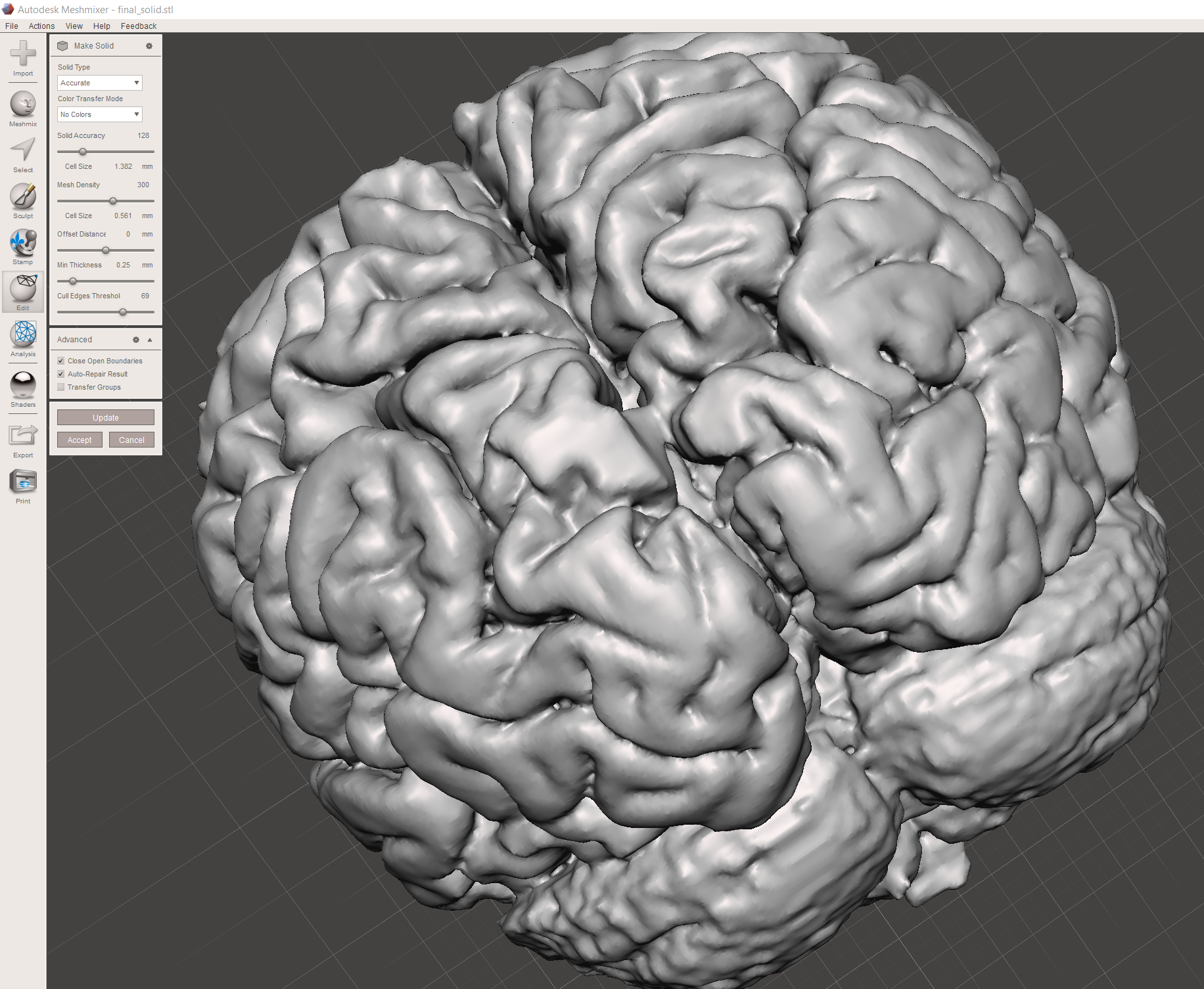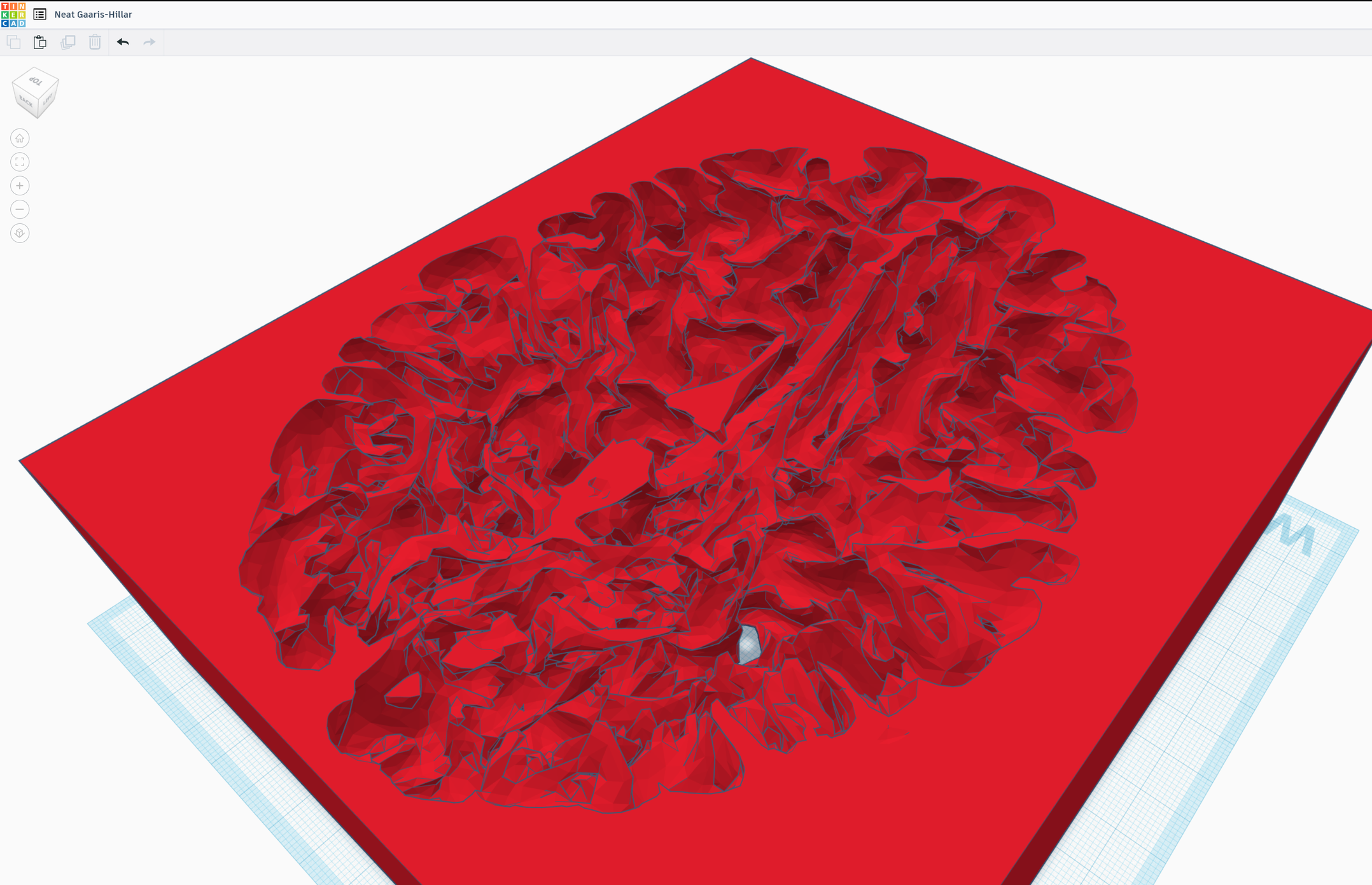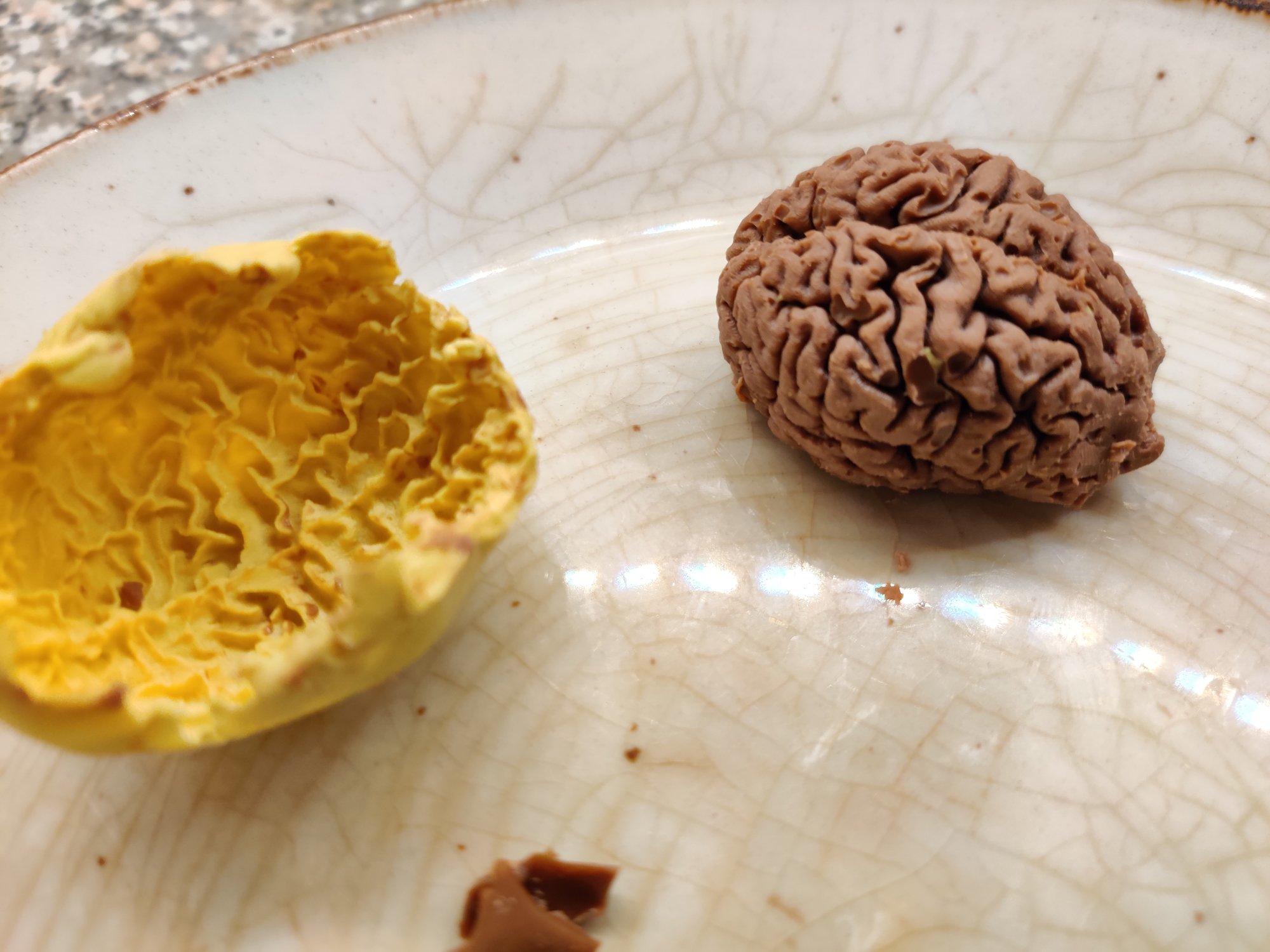The BRAWL² Tournament Challenge has been announced!
It starts May 12, and ends Oct 17. Let's see what you got!
https://polycount.com/discussion/237047/the-brawl²-tournament
It starts May 12, and ends Oct 17. Let's see what you got!
https://polycount.com/discussion/237047/the-brawl²-tournament
How can I make a negative mold of my brain without all the internal geometry?
Hi I'm looking for some advice on how to proceed with a little project I've got on the go. Last year I was a control participant in a study. They took an MRI of my brain and I was able to get the data, then I followed some tutorials on how to convert it into a model. I was able to 3D-print it at full scale!
 https://www.youtube.com/watch?v=WDSxPnSzTNk
https://www.youtube.com/watch?v=WDSxPnSzTNk
Ok so now I'm trying to make Jello shots and chocolates out of my own brain, but my current STL has some internal geometry that makes my inverse all wonky.
I tried using the "Make Solid" feature in Meshmixer to reduce the number of vertices and hopefully close up the holes. They also have a "Close Holes" feature but it's not really closing up where I want.

I took the resulting model and put it into Tinkercad just to see the negative:
As you can maybe see, the model has all the internal corpus callosum and deep grooves for the gyroid folds... basically there's too much brain in my brain, I just want the outside shell so it'll make a good mold for food.
I was able to buy some casting clay to put around a small 3D-printed positive to make the negative mold. This (the yellow cast) is basically a sample of what I want the resulting negative digital model object to be, so I can print the mold itself to make like an ice-cube tray worth of them:

I have attached the STL file of my brain in case you're willing to take a look. (You're also welcome to use it for whatever other purpose.)
Happy to mail some Easter-egg brains to anyone who can help!
Thank you,
AJ West
Montréal, Québec, Canada
 https://www.youtube.com/watch?v=WDSxPnSzTNk
https://www.youtube.com/watch?v=WDSxPnSzTNk
Ok so now I'm trying to make Jello shots and chocolates out of my own brain, but my current STL has some internal geometry that makes my inverse all wonky.
I tried using the "Make Solid" feature in Meshmixer to reduce the number of vertices and hopefully close up the holes. They also have a "Close Holes" feature but it's not really closing up where I want.

I took the resulting model and put it into Tinkercad just to see the negative:

As you can maybe see, the model has all the internal corpus callosum and deep grooves for the gyroid folds... basically there's too much brain in my brain, I just want the outside shell so it'll make a good mold for food.
I was able to buy some casting clay to put around a small 3D-printed positive to make the negative mold. This (the yellow cast) is basically a sample of what I want the resulting negative digital model object to be, so I can print the mold itself to make like an ice-cube tray worth of them:

I have attached the STL file of my brain in case you're willing to take a look. (You're also welcome to use it for whatever other purpose.)
Happy to mail some Easter-egg brains to anyone who can help!
Thank you,
AJ West
Montréal, Québec, Canada
Replies
Well well well ! This is too good to pass on
1 - Started by preparing a remeshed duplicate in Blender 2.81, which now has a simple voxel-based remesher built in. And then scaled all faces along the normals and smoothed things further manually. This results in a solid internal shape which will be used to fill up all cavities, which is pretty much what @oglu suggested..
2 - The next step is to merge the two, somehow. Booleans tend to fail in most apps when dealing with that kind of complexity, so here too voxel remeshing is a good workaround. But first I think it's good to remove the facetted quality of the original STL first . However this kind of scan-like surface meshing is slow to subdivide in Blender so I moved to Zbrush for the smoothing, as well as final remeshing (Dynamesh). Once the two models are appended and the subtools merged, it's just a matter of finding a good Dynamesh distance value.
https://www.youtube.com/watch?v=c6TSWy7tCJc&feature=youtu.be
Aaaand done
https://drive.google.com/file/d/1NZWDkamXxGT9Ni5FQEYMpu0l9YXloxCA/view?usp=sharing